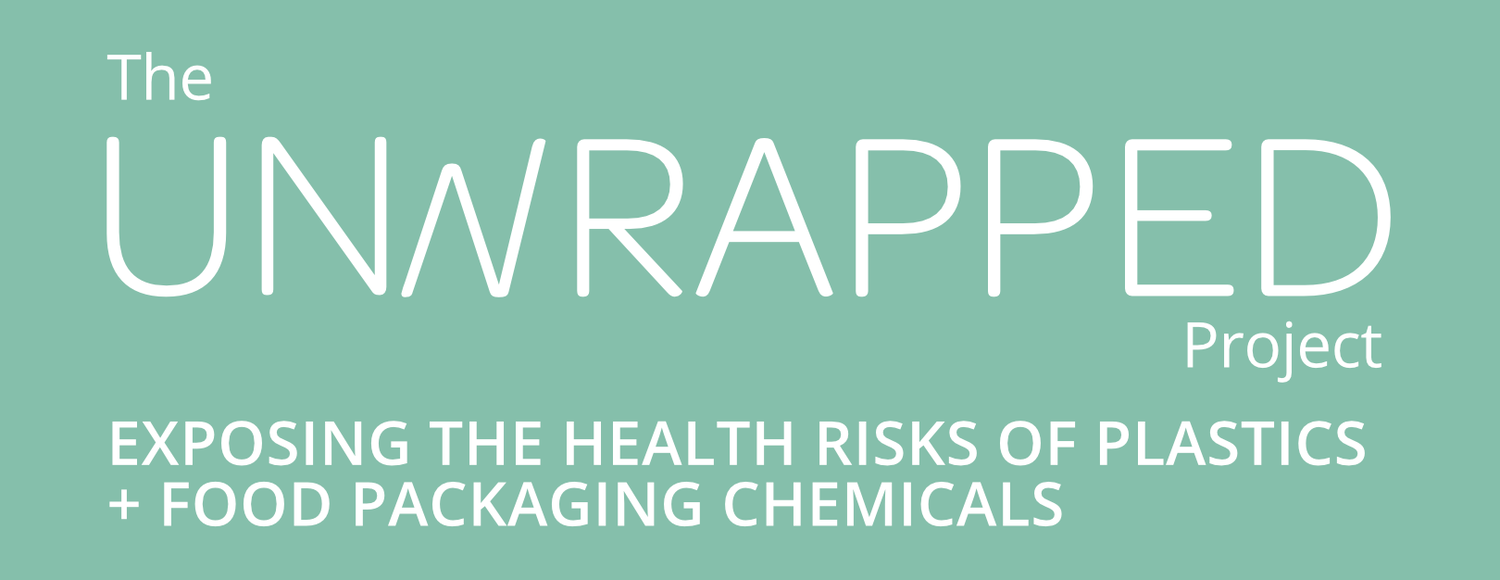
Food Packaging Chemicals
Policy recommendations to protect human health.
Globally, 12,000 food contact chemicals (FCCs) are used in the manufacture of Food Contact Materials (FCMs) — the products that come into contact with food, such as food packaging, storage containers, and factory equipment.
Many FCCs that migrate or leach from packaging into food or beverage contents can cause harm to human health. Research shows that large portions of the population are likely exposed to these chemicals as a result of chemicals that migrate out of the packaging. But regulations to ensure safety of FCCs and testing of their toxicity are largely insufficient across the globe.
While the full extent of the threats posed by chemicals in food packaging remains largely unknown, in March 2020, 33 renowned scientists expressed significant concern by issuing a consensus statement on the impacts of food contact chemicals on human health. They stated that many chemicals known to be hazardous to human health are being used in food packaging and many more hazards likely exist but are not being adequately evaluated due to poor regulation. Based on this statement, civil society/public interest organizations published a Declaration of Concern signed by over 200 organizations across the globe, calling for strong action from decision-makers.
Regulators across the world need to take action in ensuring that all food packaging is safe — for use, reuse, and recycling.
Notably, regulations on FCMs must:
establish strong risk assessment protocols for all FCMs, using the most protective methods
require assessment of health hazards posed by exposure to mixtures of chemicals and cumulative exposures from food packaging as well as other sources, such as cosmetics, pesticides, textiles, and more
require food packaging manufacturers to fully identify, disclose, and label chemicals used in their products along the supply chain
phase-out hazardous chemicals from food packaging
ensure integration of recycled content in FCMs does not threaten public health
support the transition towards reusable and safe packaging
Region Specific Recommendations
The United States
IN THE U.S., the Federal Food and Drug Administration and Congress should change the indirect Food Additives program to phase out hazardous chemicals from food packaging and transition to safer, reusable and refillable packaging. Specifically, regulators should require that:
all FCCs undergo risk assessment with review and final approval from the FDA
exemptions to risk assessment requirement (under Threshold of Regulation, Generally Recognized as Safe, and Basic Polymer Doctrine) are eliminated
risk assessment uses feeding studies and evaluates endocrine disruption as well as impacts on reproduction and development
all chemicals used in food packaging appear on the product label
Latin America
IN LATIN AMERICA, member countries of Mercosur, a trading bloc in South America, have the most established regulations on food contact materials. Mercosur’s Common Market Group resolutions include positive lists of additives, monomers, and polymers, as well as general provisions and overall migration limits. Many of these resolutions are similar to the EU relevant legislations and U.S. FDA’s rules on food additives. As US and EU regulations failed far to protect human health, stronger measures are called for in Latin America.
The European Union
THE EUROPEAN UNION (EU) committed to revise its legislation on Food Contact Materials, whose current insufficiencies are acknowledged by a wide range of stakeholders. This provides a great opportunity for the EU to ensure a toxic-free circular economy, and notably to:
set harmonized rules for all food contact materials at the EU level
reinforce risk assessments, notably to take into account non-intentionally added substances (NIAS) and the combined effect of exposure to chemicals through different sources
ensure consistency between FCM legislation and chemical legislation so that chemicals restricted under chemical legislation (REACH) cannot be used in food packaging
ensure transparency on chemicals in FCMs and increase traceability along the value chain, including during recycling processes
ensure the same safety standards for recycled materials and virgin materials, so that the integration of recycled content in FCMs, including food packaging, does not come at the expense of public health
The Asia-Pacific Region
IN THE ASIA-PACIFIC REGION, some countries have developed regulations on food contact materials as part of their general food safety laws. The regulations prohibit or restrict the use of hazardous substances and mandate compliance testing in order to keep the levels of vinyl chloride monomer, heavy metals, and other substances considered to be hazardous under thresholds, although the detail varies greatly by country. While the ASEAN’s FCM guidelines provide a comprehensive set of rules that member countries can use, there is a clear lack of direction towards phasing out of toxic chemicals in FCM. We call on countries in the region to:
Comply with the ASEAN FCM guidelines and push for stronger guidelines
Establish guidelines on toxic-free packaging and include elimination of chemicals in food packaging
Ensure CSO/academia participation in monitoring
Ensure Public access to FCM information and compliance documents
Make alternatives available through incentives for refilling stations and zero waste stores, and incentivize the development of community-driven livelihood projects for alternative delivery systems and natural and local materials
Set a short phase-out schedule for sachets (for example by included them in single use products bans)
Mandatory labelling of chemicals used in the packaging and associated health risks
Africa
IN AFRICA, while some countries including Tunisia, Algeria, and Nigeria have statutes relating to the safety of food packaging, South Africa has most detailed specifications on food packaging. The Foodstuffs, Disinfectants and Cosmetics Act (FDCA) controls the sale, manufacture, importation and exportation of food and food contact materials, and laws such as R879/2011 and R962/2012 prohibit the use of Bisphenol A (BPA) for baby bottles and keep any toxic substance, ingredient or any other substance liable to contaminate or spoil the food from food containers. Morocco also developed a draft order on food packaging materials, which contains similar requirements to the EU’s Framework Regulation (EC) No. 1935/2004 on materials and articles intended to come into contact with food.







